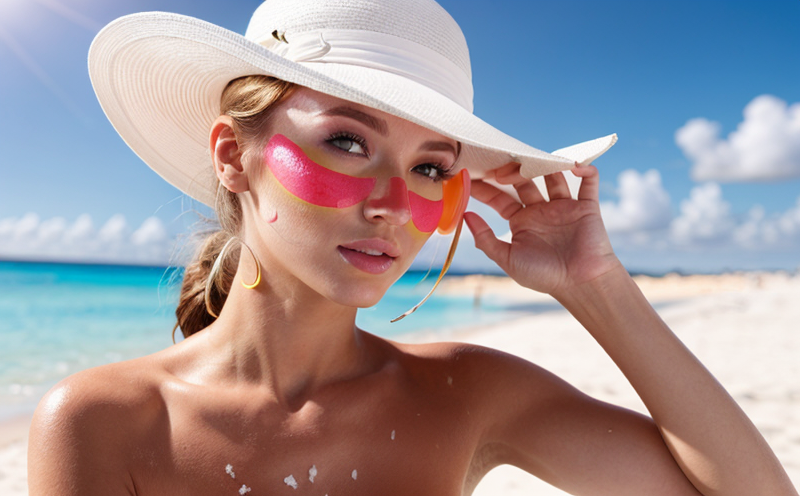UVA/UVB Ratio Testing in Sunscreen Cosmetics
The UVA/UVB ratio testing is a critical assessment for sunscreen and UV protection products, ensuring they provide the right balance of broad spectrum protection against harmful ultraviolet (UV) radiation. Ultraviolet light consists of three main types: UVC, UVB, and UVA. While UVC is mostly absorbed by the ozone layer, both UVB and UVA rays can reach Earth's surface and affect human health. UVB primarily causes sunburns, while UVA contributes to premature aging and skin cancer.
In sunscreen products, the goal is not only to block UVB but also to protect against UVA, as excessive exposure to either can have severe health implications. The American Academy of Dermatology recommends that broad-spectrum sunscreens should provide protection against both UVA and UVB rays. This is where UVA/UVB ratio testing comes into play.
The testing involves applying a known amount of sunscreen on a standardized test substrate, exposing it to controlled doses of UVA and UVB radiation using an artificial light source. The samples are then analyzed for their ability to absorb or reflect these rays. This process helps determine the effectiveness of the product in providing protection against both types of harmful radiation.
The primary instrument used for this testing is a spectrophotometer, which measures the amount of UV radiation absorbed by the sunscreen at different wavelengths. The results are compared to accepted international standards such as ISO 21362 and ASTM D7965, ensuring consistency with global regulatory requirements.
Understanding the UVA/UVB ratio is crucial for several reasons. First, it helps in assessing whether a product provides adequate protection against both types of UV radiation. Second, it aids in compliance with various regulations worldwide that mandate broad-spectrum protection factors (SPF). Finally, this testing ensures consumer safety and satisfaction by validating the sunscreen's effectiveness.
For quality managers and compliance officers, ensuring that their products meet these standards is essential for maintaining brand reputation and regulatory compliance. R&D engineers can use this data to refine formulas and improve product performance. Procurement teams benefit from knowing which suppliers provide compliant materials, helping them make informed decisions about sourcing.
Why It Matters
The importance of UVA/UVB ratio testing in sunscreen cosmetics cannot be overstated. Proper protection against both types of ultraviolet radiation is vital for maintaining skin health and preventing sun-related diseases. When a product fails to provide an adequate balance, it can lead to increased risk of sunburn, premature aging, and even skin cancer.
- Prevention of Sunburn: UVB rays are the primary cause of sunburns. Ensuring proper protection against these rays is critical for preventing painful burns that can lead to further complications.
- Avoidance of Premature Aging: UVA radiation penetrates deeper into the skin, causing damage to collagen and elastin fibers, leading to wrinkles and age spots. Broad-spectrum sunscreens help mitigate this by absorbing or reflecting both types of rays.
- Reduction in Skin Cancer Risk: Both UVB and UVA exposure contribute to the development of skin cancers. By testing for an optimal UVA/UVB ratio, manufacturers can ensure their products offer comprehensive protection against these risks.
A failure in this area could result in significant negative consequences, including legal action due to non-compliance with regulatory standards and potential damage to brand reputation from unsatisfied customers.
Benefits
- Enhanced Product Safety: By ensuring that sunscreens provide adequate protection against both UVA and UVB rays, manufacturers can significantly enhance the safety of their products.
- Regulatory Compliance: Meeting international standards like ISO 21362 ensures compliance with global regulations, avoiding potential legal issues.
- Informed Consumer Choices: Providing accurate UVA/UVB ratio information allows consumers to make informed decisions about their skincare needs.
The benefits extend beyond just the product itself; they also include improved brand reputation and increased customer trust. By demonstrating a commitment to quality and safety, manufacturers can build long-term relationships with customers who appreciate such dedication.
Why Choose This Test
- Accurate Results: Our state-of-the-art laboratory uses cutting-edge technology to ensure precise and reliable measurements of the UVA/UVB ratio.
- Comprehensive Analysis: We analyze not just the SPF but also the PFA (Protection Factor Against UVB) and MED (Minimal Erythema Dose) values, providing a holistic view of sunscreen effectiveness.
- Expertise and Experience: Our team consists of highly skilled professionals with extensive experience in cosmetics testing, ensuring accurate interpretation of results.
- Comprehensive Reporting: We provide detailed reports that include not only the quantitative data but also qualitative insights into the performance of your product.
In addition to these benefits, choosing this test allows you to stay ahead of regulatory changes and market trends. By investing in UVA/UVB ratio testing early on, you can ensure that your products meet current and future standards, thus maintaining a competitive edge in the marketplace.





